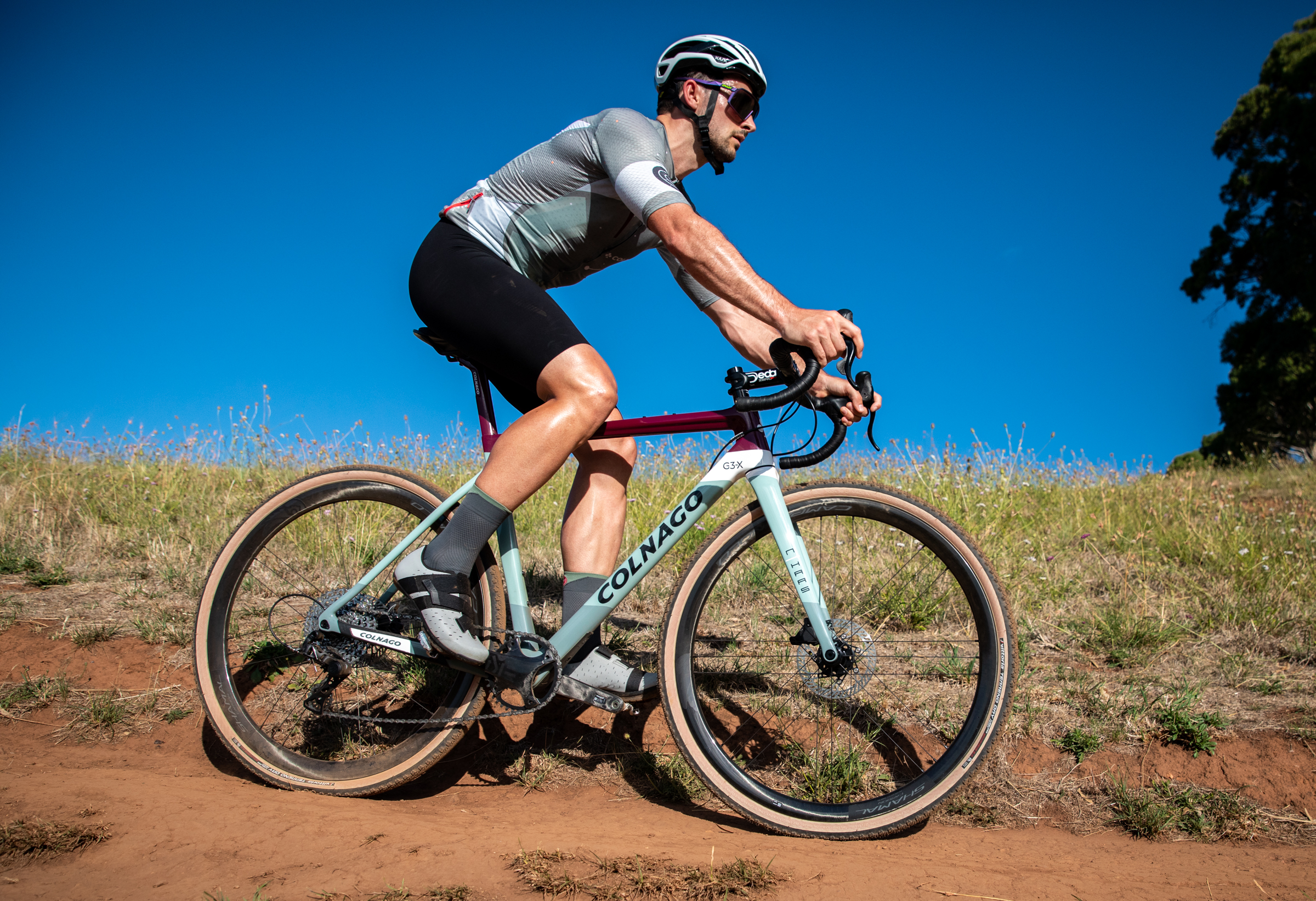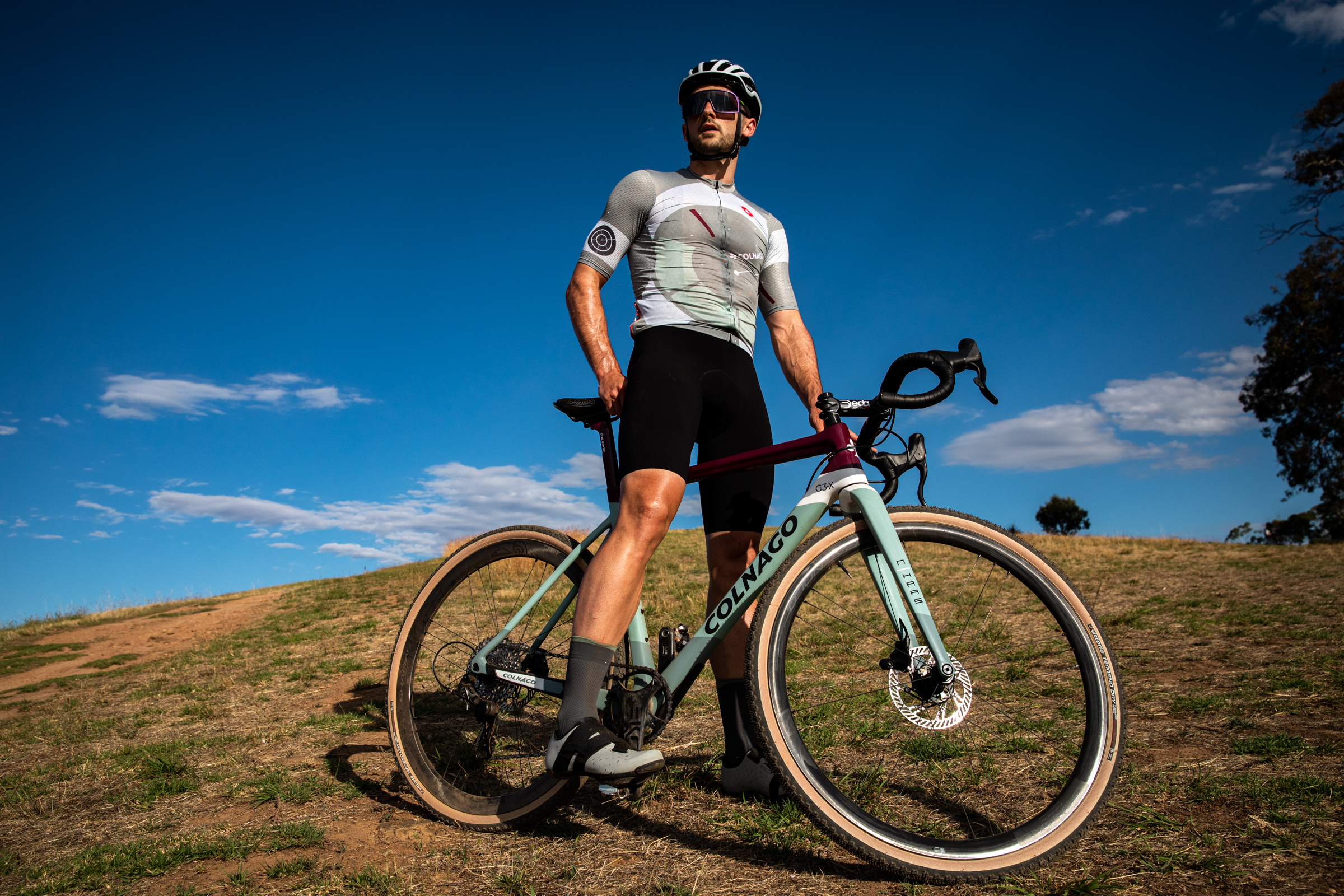Nathan Haas blog: Is there such a thing as too much gravel?
You can in fact have too much of a good thing. Gravel, it seems, is no different

Atop Adelaide’s stunning Mt Lofty, hours into my fourth consecutive day training on my new gravel bike (did you see it’s a Colnago?), having torn up the steep, rocky trails, I stop, and look out, trying to enjoy the view into the city and beyond to the sea.
Everything hurts. The bad kind of hurt. My arms, back and shoulders feel like the morning after your first gym session. I have DOMS, bike DOMS (is that a thing?)
I’ll admit it, even professional cyclists who’ve become accustomed to receiving new bikes regularly get new bike fever. Especially me. Once I have a new toy, I can’t keep off it. This month was no different, especially as it was a new gravel bike.
Grimacing in pain unscrewing my bidon lid, it struck me that perhaps I had cooked the goose and that maybe, just maybe, I’d done too much gravel.
During the last few years of my WorldTour racing career, my coach would subtly say: “Nathan, do you think perhaps you’re riding your gravel bike too much?” I’d get the message and back it off a little.
I’ve always loved gravel riding because it really complements training for the road in so many ways, but you truly do have to be event focused if you’re doing something at the highest level. If you want to win on the road, your focus has to be on the road.
So does this rule apply also for gravel? If you want to win the world’s biggest gravel races, do you have to do most of your riding on gravel? Well, let’s break it down somewhat.
Let’s bring it back to my faithful moment atop Mt.Lofty. Maybe I just needed a rest day? Well, I won’t argue that - in fact I agree - but there is a difference here. Compared to road, gravel totally ends you. If you compare how you feel after a four-hour road ride vs four hours on gravel, you’d never know it was the same sport.
Gravel is a complete body workout. No, I’m not selling it to sound like the eight-minute ab total workout video but when you break down the demands of gravel, you begin to get it.

When you’re riding the gravel bike all day you're making small compensations with your core, your lower back, you’re riding super steep and loose surfaces which makes your pedal technique more important than pure power. You are constantly doing short, hard accelerations and then often not pedal for long downhill sections. Your upper body, arms, shoulders are all working hard to keep the bike stable and absorbing vibrations and impacts. The list goes on.
In essence, there is no flow compared to the road. It’s hard. So can you train for gravel just by doing gravel? The answer is tricky, so let’s digress further.
I’m not going to argue with those out there who are adamant that all they want/need/can do is gravel. I totally respect that, but I think if you want to focus on gravel, as in, really focus on winning gravel races against the best, to go fast on gravel, you need to do less.
Do I need to do less gravel riding?
What? Did I just admit that I need to do less gravel? I hate that I’ve come to this point. Who am I?
I’ve always been of the opinion that knowledge = Theory+Experience. I’ve always had trouble accepting advice from sports scientists that don’t ride bikes. Simple as that. They’re rich in theory, but don’t tell me what’s up if they’ve never tried eating 120 grams of carbs per hour, for six hours.
In theory, their science makes sense. But seriously. Have they tried it? Ouchie. Coaches I think need to walk the walk before I trust their talk. But how can I say I’ve walked the walk with gravel when really, I’m just starting.
Well, above all else I’m a racer, I love riding my gravel bike but there is a limit. So what do the other big hitters of the gravel world do?
Pete Stetina (If I remember correctly) thinks his training is still about 80 per cent road, 20 per cent off-road. But that much road? Really? Ouch. Didn’t I just quit road for gravel?
Mountain bike riders are similar, maybe closer to 70/30, but that makes sense, because to do the sustained and specific efforts needed for the demands of racing, you need an uninterrupted road. Not only do you need an uninterrupted smooth road for hard efforts, you also need it for easy endurance days. Doing back-to-back six-hour days on gravel tracks is absolutely destroying for your body. So if you’re training to go fast on gravel, you really need to ride the road bike too.
Okay, I admit it’s time for some more road
After my bad romance in Adelaide, riding my new bike too many days in a row and way too hard, I took some rest. I went to the beach to check myself before I continued to wreck myself and heeded to my own advice: I need to do some days on the road bike.
Since then, I am pleased to say, the hours on the road have brought my legs and body into a much better, and much less painful state. And to be honest, those long days on the road bike are much more enjoyable when it isn’t every day.
Moreover, the days on the gravel bike have become invariably faster and, for what it’s worth, way more fun.
You can in fact have too much of a good thing. Gravel it seems. Is no different.
Get The Leadout Newsletter
The latest race content, interviews, features, reviews and expert buying guides, direct to your inbox!
Nathan Haas turned his back on the WorldTour to dive into world of gravel. After a decade at the top echelon of professional road racing, the Australian is answered the off-road call in 2022, teaming up with Colnago to race and ride as a privateer on the burgeoning global gravel scene. He'll be documenting his experiences for Cyclingnews along the way, in his own inimitable style.